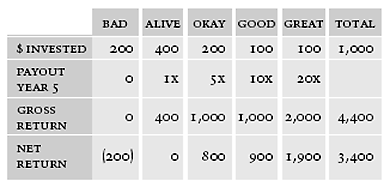In Corporate Innovation, There’s No Silver Bullet. It’s Silver Buckshot.
The writing is on the wall. Literally.
If you walked into our break room/lunch room/disco/80’s arcade at Magnani, you’d have seen the title phrase of this post permanently (well, at least as permanent as vinyl transfer letters can be) scribed on the wall. “There’s no silver bullet. It’s silver buckshot.” It was a favorite phrase of the firm’s founder, Rudy Magnani. At the time he said it, Rudy was referring to his philosophy on the successful practice of integrated marketing, but the sentiment applies as well to how continuous innovation happens with any success.
The odds of any one innovation succeeding are dismal.
The common wisdom is that nine out of ten innovations fail. And by fail, we mean someone or some entity believed in the idea enough initially to apply money, human capital or both to making it work and they simply couldn’t sustain the endeavor. That applies both to standalone companies and major projects within existing enterprises. So, with odds like that, why bother? Simply put, a successful innovation can easily return more than 10X its initial investment capital.
The odds of some innovations succeeding are pretty good.
The smartest companies approach innovation investing like venture capitalists. VCs invest in a lot of ideas. They form little to no emotional attachment to any single idea. They write off obvious under-performers early. They ignore the breakout successes—they take care of themselves. And they spend the bulk of their efforts trying to maximize the middling investments that could go either way. One reason for this approach is that on the extreme ends of the success curve, obvious market forces prevail. But in the middle is where you find the “better than market” return opportunities. There, execution can make a difference.
How venture capitalists expect their portfolios to perform:
(Source: https://hbr.org/1998/11/how-venture-capital-works)
It takes balls, and lots of them.
Think of it like the classic pin board and steel ball demonstration museums use to illustrate a normal distribution. You drop a ball down the pin board. It bounces from pin to pin, succumbing to the forges of gravity and chaotic uncertainty, eventually landing at some point along the bottom of the board.If you invest in a single ball drop, hoping it will land at the far right of the board, your odds of success are terrible. Chaos reigns supreme. But with a large number of drops, no amount of tinkering with the pins could stop some of the steel balls from bouncing to the far ends of the display. You can safely predict a normal distribution of results—from failures to breakout stars.An experienced tinkerer could, however, strategically bend a few pins and skew the distribution to shift the aggregate distribution curve toward one end or the other. Your innovation efforts should focus on creating, shepherding and tinkering with a large enough portfolio of ideas that randomness and market chaos poses only small threats to your overall success.
In the end, the game is rigged—if you do it right.
The romantic notion of innovation is that it is spawned from a single lightning bolt of inspiration. And that can happen. But building a long-term, innovation capability within an organization is usually better served by a systematic approach to generating the proverbial stormfront, increasing the chances of lightning striking twice.

